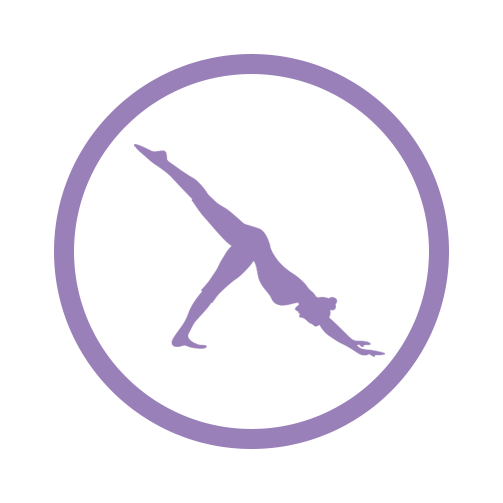Imagine waking up one day and realizing that your bones have been quietly weakening for years—without you even knowing it. That’s the reality for millions of people living with osteoporosis. It’s often called the “silent disease” because it sneaks up on you, making bones brittle and fragile, leading to unexpected fractures. But what if you could get ahead of it? What if you could understand your risk and take action before it’s too late?
Here’s the good news: your genes don’t have the final say! While genetics play a big role in your bone health, exercise, and lifestyle choices can make a massive difference. In this article, we’ll dive into how genetics influence osteoporosis and, more importantly, how the right exercises can help you build stronger bones and reduce your risk.
Understanding Osteoporosis and Bone Health
Osteoporosis is a condition where bones lose their density, becoming weak and more prone to fractures. It’s most common in older adults, especially postmenopausal women, but it can affect anyone.
Why does it happen?
- As we age, bone breakdown outpaces bone formation—meaning your body can’t keep up with repairing and strengthening your skeleton.
- Factors like hormonal changes, poor diet, and lack of exercise accelerate the process.
- Genetics also play a major role—some people are naturally more prone to developing osteoporosis.
But here’s the kicker: just because osteoporosis runs in your family doesn’t mean you’re destined to have it. That’s where exercise and lifestyle choices come in.
The Role of Genetics in Osteoporosis
If your mom, dad, or grandparents had osteoporosis, you might be wondering—does that mean you’ll get it too? Not necessarily.
How do genetics influence bone health?
- Some genes, like COL1A1, VDR, and ESR1, affect bone density and calcium absorption.
- Your genetic makeup determines how efficiently your body builds and maintains bone mass.
- If osteoporosis runs in your family, your risk may be higher, but your lifestyle choices can still make a significant impact.
So, should you get genetic testing? It’s an option! Some people choose to undergo genetic testing to understand their risks better. Is osteoporosis genetic? If you’ve ever wondered about this, genetic testing can provide clarity. However, even if you have high-risk genes, exercise and nutrition can still help you keep your bones strong.
How Exercise Strengthens Bones
Here’s a simple fact: Bones, like muscles, get stronger when you use them. When you put stress on your bones through exercise, your body responds by making them denser and tougher.
Exercise helps by:
- Stimulating bone formation through weight-bearing activities
- Improving balance and coordination, reducing fall risk
- Strengthening muscles that support and protect bones
Let’s break it down—what are the best exercises for osteoporosis prevention?
Best Exercises for Osteoporosis Prevention
1. Weight-Bearing Exercises (Your Bones Love These!)
These exercises make your body work against gravity, forcing your bones to stay strong.
- Walking or brisk walking (skip the treadmill and hit the pavement!)
- Jogging or hiking (if your joints allow it)
- Dancing (yes, Zumba counts!)
- Stair climbing (skip the elevator!)
2. Strength Training (Because Strong Muscles = Strong Bones)
Lifting weights isn’t just for bodybuilders—it’s one of the best things you can do for your bones. Strength training helps maintain bone density by putting stress on the bones, encouraging them to grow stronger.
- Lifting weights (dumbbells, kettlebells, or even resistance bands)
- Bodyweight exercises (squats, lunges, push-ups, planks)
- Resistance band workouts (great for beginners!)
3. Balance & Flexibility Training (To Prevent Falls!)
Falls are the biggest cause of fractures in people with osteoporosis. Improving your balance and flexibility can help prevent falls and keep you steady on your feet.
- Yoga (great for strength and flexibility)
- Tai Chi (a gentle but effective way to improve balance)
- Stretching (keeps joints mobile and muscles flexible)
The Ideal Exercise Routine Based on Genetic Risk
So, how do you combine exercise with what you know about your genetics? If you have a higher genetic risk for osteoporosis, your approach should be even more focused:
- High-Risk Individuals: Prioritize weight-bearing and resistance training at least 3–4 times per week.
- Moderate-Risk Individuals: Aim for a mix of all three types of exercises at least 3 times per week.
- Low-Risk Individuals: Still important to engage in regular activity, but you can be more flexible with your routine.
Consistency is key—even 30 minutes a day can make a huge difference over time.
Not sure where to start? The O’Coach App offers customized workout plans based on your needs, helping you build stronger bones safely!
Additional Lifestyle Strategies for Bone Health
While exercise is a game-changer, don’t forget about these bone-building essentials:
- Calcium & Vitamin D: Your bones need these like plants need water. Get them from dairy, leafy greens, nuts, and fortified foods.
- Protein-Rich Diet: Protein helps with bone and muscle repair—think lean meats, beans, eggs, and nuts.
- Sunlight Exposure: Natural vitamin D production happens when you soak up the sun.
- Avoid Smoking & Excessive Alcohol: Both can weaken your bones over time.
Conclusion
Genetics might load the gun, but lifestyle choices pull the trigger. Just because osteoporosis runs in your family doesn’t mean you’re doomed. With the right mix of weight-bearing exercise, strength training, and balance-focused activities, you can take control of your bone health.
Start today. Whether it’s a simple walk, a yoga session, or hitting the weights—your bones will thank you!


